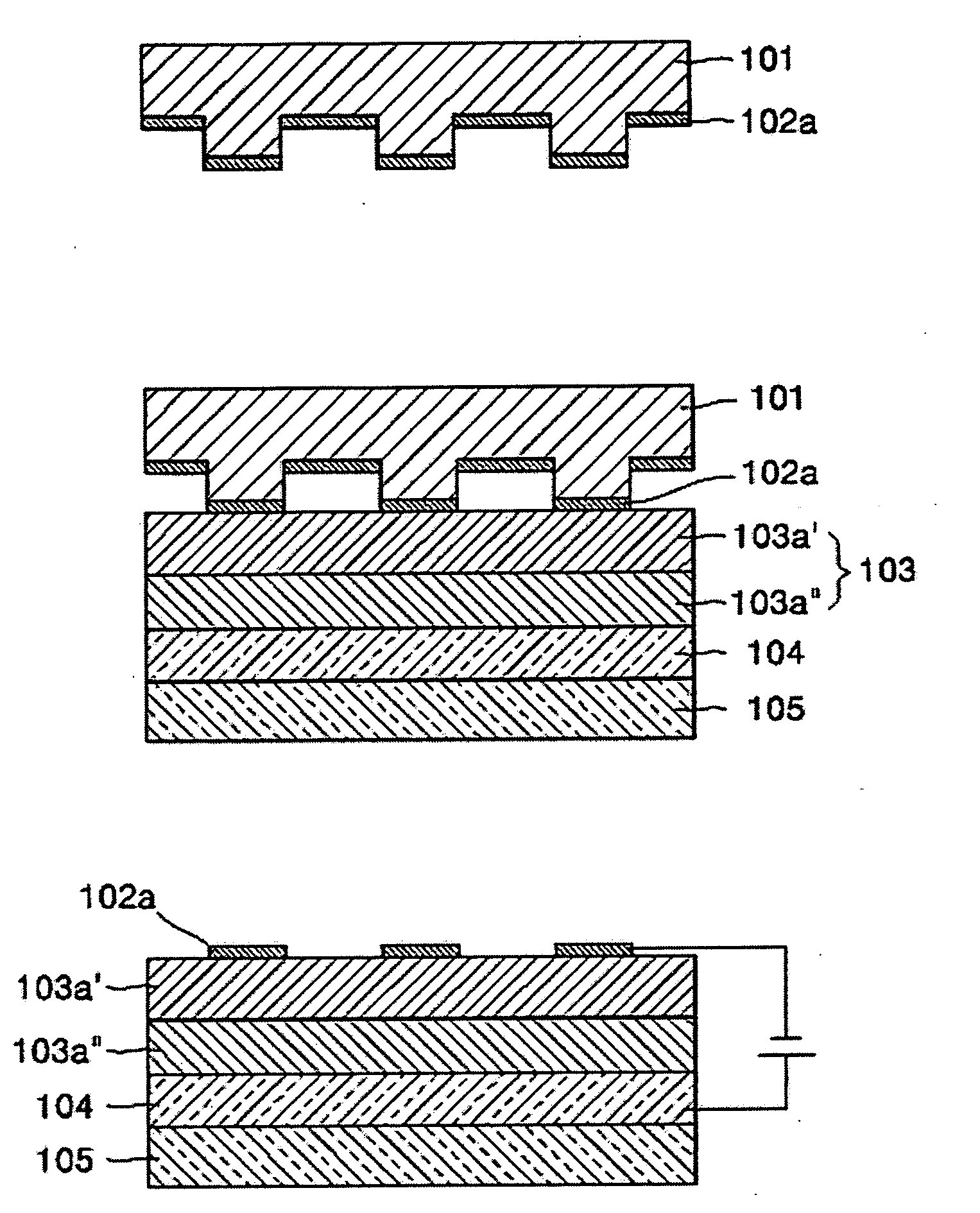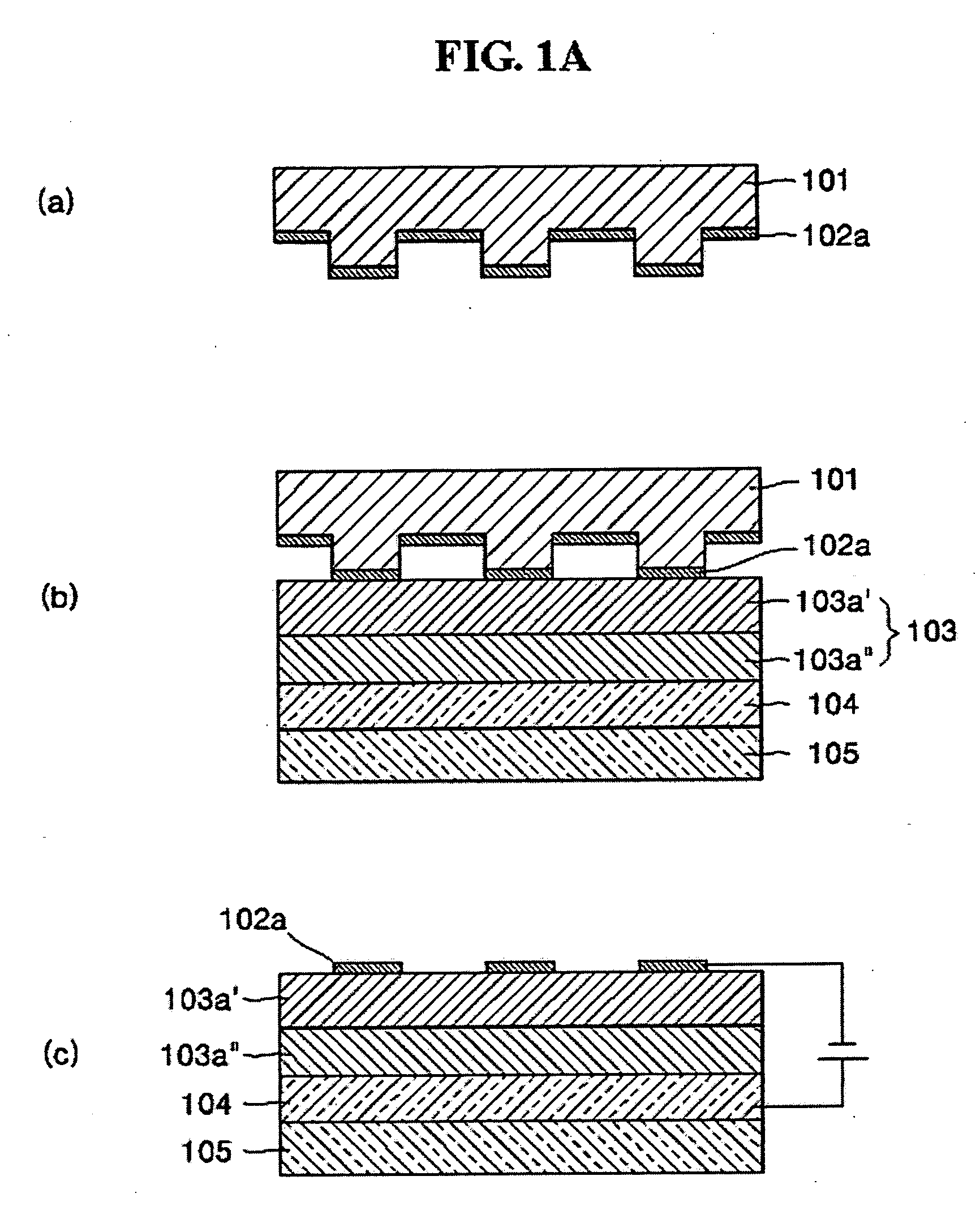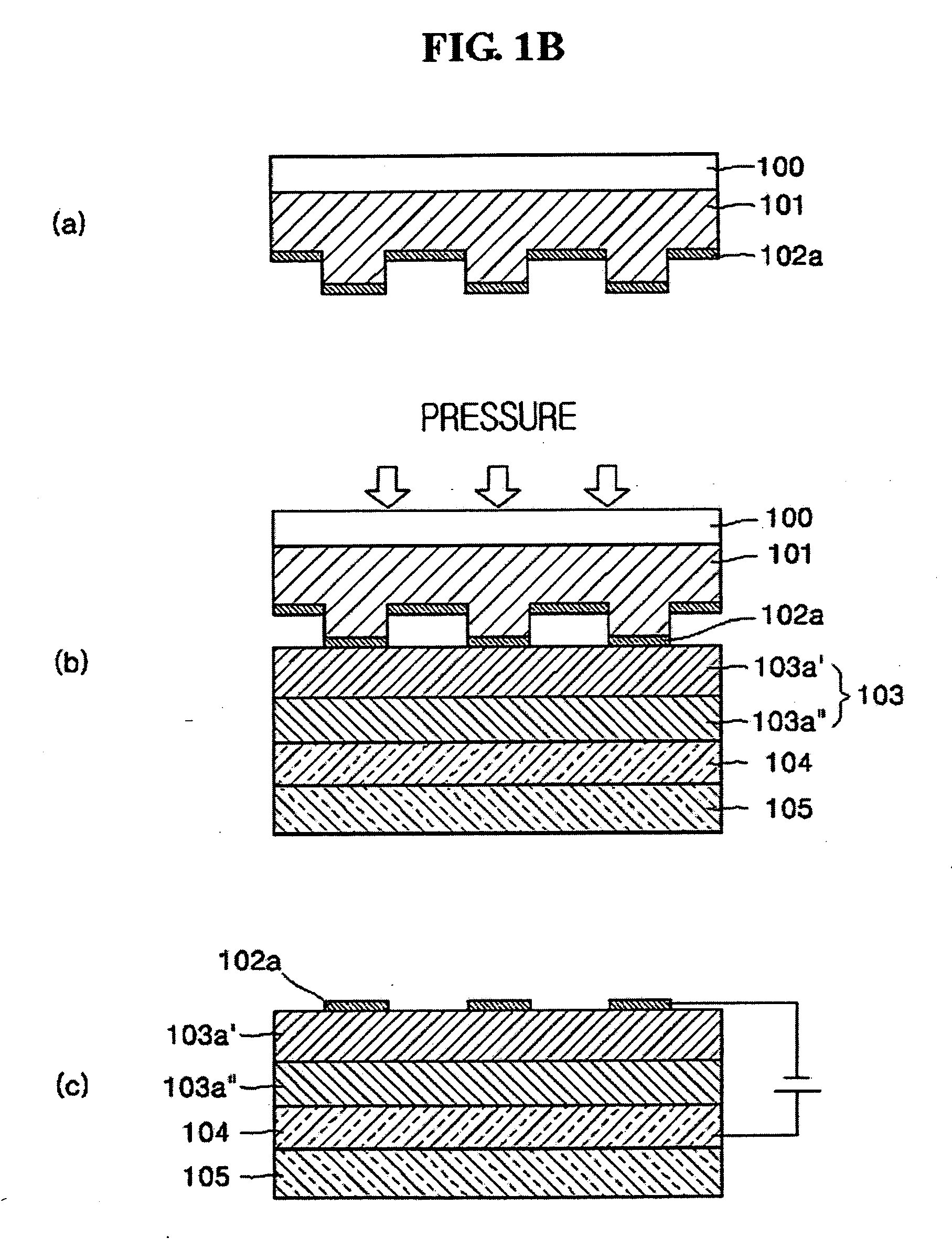Donor film and methods for fabricating patterned organic electroluminescent devices using the same
a technology of organic electroluminescent devices and donor films, which is applied in the manufacture of electric discharge tubes/lamps, discharge tubes luminescnet screens, instruments, etc., can solve the problems of large amount of energy required, difficult to achieve micro-patterning, and substantial inability to put into practice, so as to improve the transfer efficiency and facilitate and efficiently manufacture
- Summary
- Abstract
- Description
- Claims
- Application Information
AI Technical Summary
Benefits of technology
Problems solved by technology
Method used
Image
Examples
example 1
[0078] Preparation of Donor Film for Thin Film Layer (Transfer Layer: Metal Layer Only)
[0079] Sylgard 184A and Sylgard 184B (manufactured from Dow Corning Inc.) were mixed in a stirring vessel in a weight ratio of 10:1 to give a PDMS forming solution. The resulting PDMS forming solution was poured into a master formed of a separately prepared wafer. The master has a striped pattern. Bubbles in the PDMS forming solution poured into the master were removed using a vacuum pump, followed by curing the PDMS forming solution in an oven at a temperature ranging from about 60° C. to about 80° C. and removing the master from the resultant structure, thereby obtaining a PDMS film layer.
[0080] Au was deposited on a patterned surface of the obtained PDMS film layer to a thickness of 20 nm by electron beam deposition under vacuum of 1×10−7 torr.
[0081] Fabrication of Patterned Organic EL Device
[0082] A glass substrate and 15 Ω / cm2 (1200 Å) ITO as a first electrode cut into a size of 50 mm×50 ...
example 2
[0083] Preparation of Donor Film for Thin Film Transfer (Transfer Layer: Organic Layer Only)
[0084] Sylgard 184A and Sylgard 184B (manufactured from Dow Corning Inc.) were mixed in a stirring vessel in a weight ratio of 10:1 to give a PDMS forming solution. The resulting PDMS forming solution was poured into a master formed of a separately prepared wafer. The master has a striped pattern. Bubbles in the PDMS forming solution poured into the master were removed using a vacuum pump, followed by curing the PDMS forming solution in an oven at a temperature ranging from about 60° C. to about 80° C. and removing the master from the resultant structure, thereby obtaining a PDMS film layer.
[0085] Alumina quinine (Alq3) was deposited on a patterned surface of the obtained PDMS film layer to a thickness of 30 nm under vacuum of 1×10−7 torr to be used as a second organic layer forming an electron transport layer.
[0086] Fabrication of Patterned Organic EL Device
[0087] A glass substrate and 1...
example 3
[0088] Preparation of Donor Film for LITI (Transfer Layer: Metal Layer and Organic Layer)
[0089] Sylgard 184A and Sylgard 184B (manufactured from Dow Corning Inc.) were mixed in a stirring vessel in a weight ratio of 10:1 to give a PDMS forming solution. The resulting PDMS forming solution was poured into a master formed of a separately prepared wafer. The master has a striped pattern. Bubbles in the PDMS forming solution poured into the master were removed using a vacuum pump, followed by curing the PDMS forming solution in an oven at a temperature ranging from about 60° C. to about 80° C. and removing the master from the resultant structure, thereby obtaining a PDMS film layer.
[0090] Au was deposited on a patterned surface of the obtained PDMS film layer to a thickness of 20 nm by electron beam deposition, Ca was deposited thereon to a thickness of 5 nm by thermal deposition, and a second organic layer made of alumina quinine (Alq3) as a potential electron transport layer was dep...
PUM
| Property | Measurement | Unit |
|---|---|---|
| thickness | aaaaa | aaaaa |
| work function | aaaaa | aaaaa |
| temperature | aaaaa | aaaaa |
Abstract
Description
Claims
Application Information
 Login to View More
Login to View More - R&D
- Intellectual Property
- Life Sciences
- Materials
- Tech Scout
- Unparalleled Data Quality
- Higher Quality Content
- 60% Fewer Hallucinations
Browse by: Latest US Patents, China's latest patents, Technical Efficacy Thesaurus, Application Domain, Technology Topic, Popular Technical Reports.
© 2025 PatSnap. All rights reserved.Legal|Privacy policy|Modern Slavery Act Transparency Statement|Sitemap|About US| Contact US: help@patsnap.com



